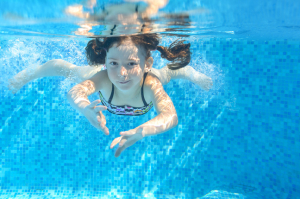 Drowning is the second highest cause of accidental death in children with approximately 750 children drowning each year. In more than half of these instances, a parent will be nearby, with no clue that their child is, indeed, drowning. That is because drowning is a quiet process, and often people in close proximity aren’t even aware that it is happening.
Drowning is the second highest cause of accidental death in children with approximately 750 children drowning each year. In more than half of these instances, a parent will be nearby, with no clue that their child is, indeed, drowning. That is because drowning is a quiet process, and often people in close proximity aren’t even aware that it is happening.
What are the signs of drowning? Forget what you’ve heard in the past. There usually is no thrashing or calls for help, unlike what is depicted on television. Instead, victims follow the Instinctive Drowning Response described by Dr. Pia in On Scene, a Coast Guard publication:
- People who are drowning are usually unable to yell for help because they cannot breathe. A person cannot talk if they cannot breathe.
- While a drowning person’s mouth might surface from the water, it is a very fast process that only allows a very brief instant to take a breath and exhale. There isn’t sufficient time to also call for help.
- People who are drowning are not able to raise or flail their arms to signal distress. First, the survival instinct causes them to extend their arms downward in order to gain the necessary leverage to raise their head above water. Second, they are also unable to move toward or reach out to a rope or flotation device.
- In the process of drowning, a person’s body will initially remain vertical or upright. The legs do not indicate any signs of kicking. There is a brief 20 to 60 second window before the body is fully submerged and the head cannot surface for air.
When an individual is thrashing or calling for help, they do need help! However, at this stage, they are able to express distress because the Instinctive Drowning Response has not yet kicked in. Below are some of the real signs of drowning that you need to look for:
- Mouth at or just below water level
- Mouth open with head tilted back
- Eyes: closed, lack of focus, or glassy
- Body vertical with no signs of kicking; person looks like they are climbing a ladder under water
- Attempting, but unable to roll over onto back or swim in desired direction
- Gasping, choking
- Inability to talk or respond when asked if they need help
Because drowning is often a silent process, it requires awareness of the signs and strong visual observation. Most people think everything is okay as long as a child is not screaming or flailing their arms. That is precisely when it is time to act—children splash and talk and laugh when they are in the water. When their mouth and body becomes quiet, act immediately to ensure their safety.

